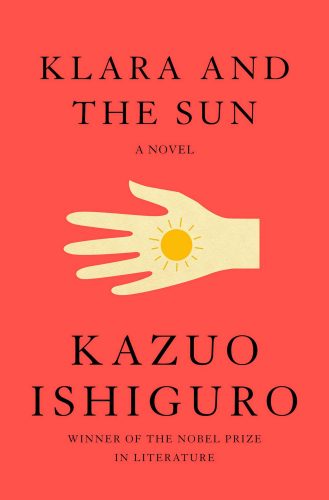Book Review: “Klara and the Sun” — Dystopia Yes, But There’s Hope
By Ed Meek
Klara and the Sun is a dystopian novel worth recommending: it is a thought-provoking joy to read
Klara and The Sun by Kazuo Ishiguro. Knopf, 303 pages. $28.

What is the biggest challenge we are faced with? Is it the climate crisis? Reducing the growing disparity between the rich and the poor? President Biden appears to be poised to begin to tackle these two horrific problems. Author Kazuo Ishiguro, however, has referred to climate change as “just an energy problem.” In the Nobel laureate’s new novel, Klara and the Sun, he invites us to consider two other developing challenges: artificial intelligence and gene editing, both of which he believes are “out of our control.” The disparity between the rich and the poor also figures in his novel as well.
You may remember candidate Andrew Yang in the last presidential primary debates raising the issue of all the jobs that would be lost to automation. His answer was the establishment of a universal basic income for workers who will be replaced by robotics and artificial intelligence (although, to my mind, that doesn’t really solve the problem). In a recent report, the World Economic Forum concluded that “a new generation of smart machines, fueled by rabid advances in artificial intelligence and robotics, could potentially replace a large proportion of existing jobs.” About 85 million jobs by 2025!
And what’s the downside of gene editing? Scientists have already helped some cancer patients using CRISPR (clustered regularly interspaced short palindromic repeats). They’ve cured mice of AIDS through the use of CRISPR. And in 2018 a scientist in China used the technique on babies in embryo to protect them from contracting AIDS. He is serving a three-year prison sentence. But that punishment is not going to stop the coming demand for gene editing because people with the means to pay are going to have the health, the intelligence, and the appearance of their children enhanced.
Klara and the Sun is set in the foreseeable future. The novel is written in the first person from the point of view of Klara, who is an AF or artificial friend to Josie, an adolescent girl and member of an upper class whose children are “lifted” by gene editing. Josie needs a “friend” because she leads an isolated life in the country with her “high-ranking” mother and a housekeeper. She is educated through online tutors. Josie is also pampered because gene-editing has left her physically disabled with what sounds like muscular dystrophy.
In an interview in The Guardian, Ishiguro says he was thinking of writing Klara and the Sun as a children’s book. The story’s direct, uncomplicated style reflects that original inclination. Klara’s narrative point of view is that of a bright, caring adolescent who discovers the world through loving observation; she learns about people through careful interaction. Klara is programmed to be a friend; her disposition is similar to that of the boy in Steven Spielberg’s film AI. But in that movie the artificial male is much nicer than the humans, just as in the original Blade Runner the replicants are considerably more humane than the frightened men who are hunting them down. Ishiguro’s characters are, on the other hand, all sympathetic. And the common thread they share with Klara is an appealing sense of hope. So, even though the future that Ishiguro imagines is dystopian, the people, whether they are high-ranking or the others who have been left behind in the technological revolution, are likable. Klara, for example, is willing to put herself at risk in order to help her owner, Josie. And she remains optimistic, despite a number of setbacks.
Ishiguro was born in Japan. His father, a scientist, moved the family to London when the writer was five years old. He is the author of eight books, including 2005’s similarly dystopian-themed Never Let Me Go now. In both of these novels he brings adroit characterization and plotting to what has been (unfairly) dismissed as “genre fiction” (sci-fi). He knows how to generate suspense — what happens throughout the story is surprising, though in retrospect it all seems inevitable. He also creates complex figures with vibrant inner lives. Klara and the Sun is a thought-provoking joy to read.
Ed Meek is the author of High Tide (poems) and Luck (short stories).
